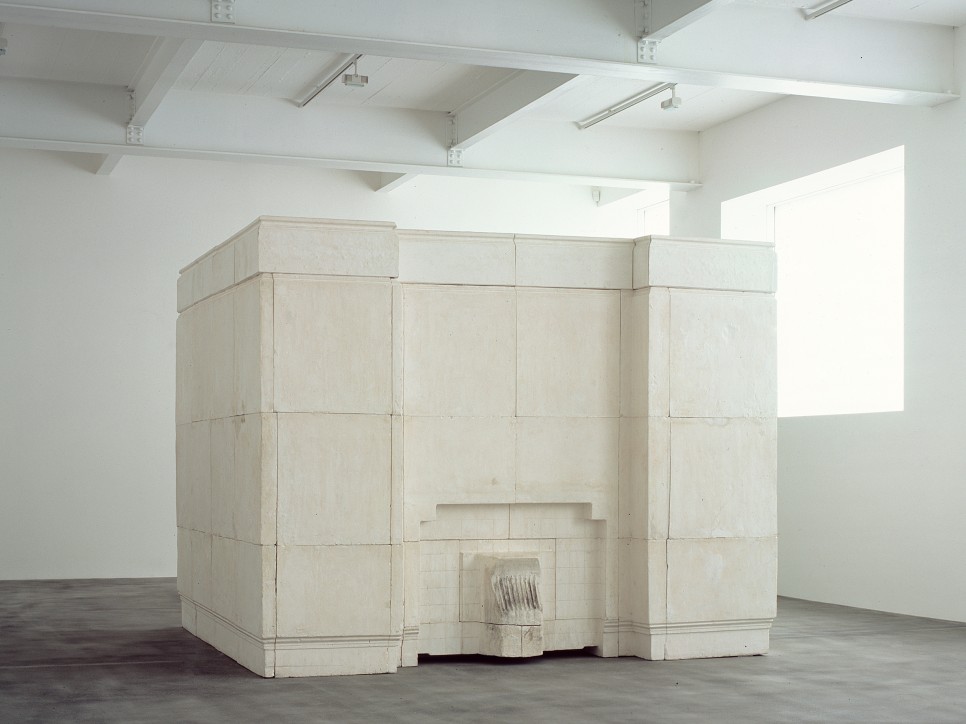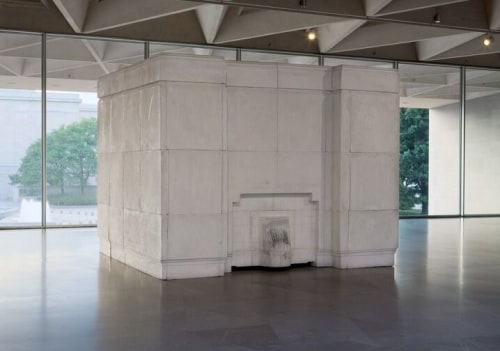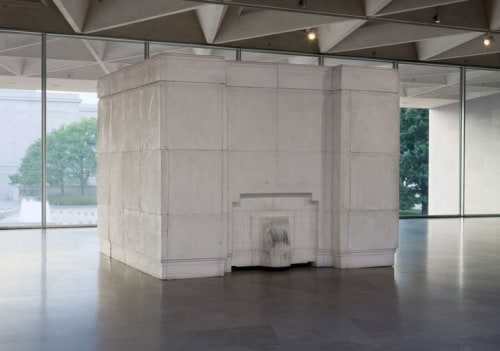

Rachel Whiteread, Ghost, 1990; plaster on steel frame; National Gallery of Art, Washington, D.C. Gift of The Glenstone Foundation. © Rachel Whiteread.
Between September, 2018 and January, 2019, the contemporary British artist Rachel Whiteread was the subject of a retrospective at the National Gallery of Art (NGA) in Washington, D.C. One of the benefits of such a career-spanning exhibition, which also traveled to the Saint Louis Art Museum from March 17 to July 9, 2019, is the possibility of discovering reoccurring themes and artistic strategies in the artist’s oeuvre.1 However, an additional benefit of seeing a survey of work by a contemporary artist, in an institution such as the NGA, is the opportunity to measure these reoccurring themes and artistic strategies in relationship to a larger history of the visual arts. For example, is it possible that an old master such as El Greco (Domenikos Theotokopoulos) might propose a conception of art as a catalyst for the viewer’s spiritual imagination that enriches a viewer’s engagement with Whiteread’s sculpture? Or, conversely, could Whiteread’s art demonstrate how strategies present in El Greco’s painting manifest themselves in contemporary reality?
In fact, the history of the visual arts is rich with connections between works that are separated by centuries of time and differences of historical context, and which, at least on the surface, seem entirely unlike each other. Such is the affinity between Untitled (Domestic), a sculpture by Whiteread, created in 2002, and a painting, from the NGA’s permanent collection, of a penitent Saint Jerome by El Greco from between 1610 and 1614. One work is a painting created during the Catholic Reformation and the other is a recent work of sculpture. Untitled (Domestic) is a cast of the space within a stairwell. El Greco’s painting depicts a Christian saint in a moment of spiritual awakening. El Greco frequently made work for distinctly religious contexts; Whiteread makes no religious claims for herself or her art. Nevertheless, these works share a common strategy and a similar purpose that transcend their differences. Both works direct the viewer’s eye to move through a compositional structure that is deliberately complex, thereby testing the viewer’s visual attention. El Greco and Whiteread require viewers to read and reread their work in order for viewers to comprehend what they see.
Read full article at societyarts.org

